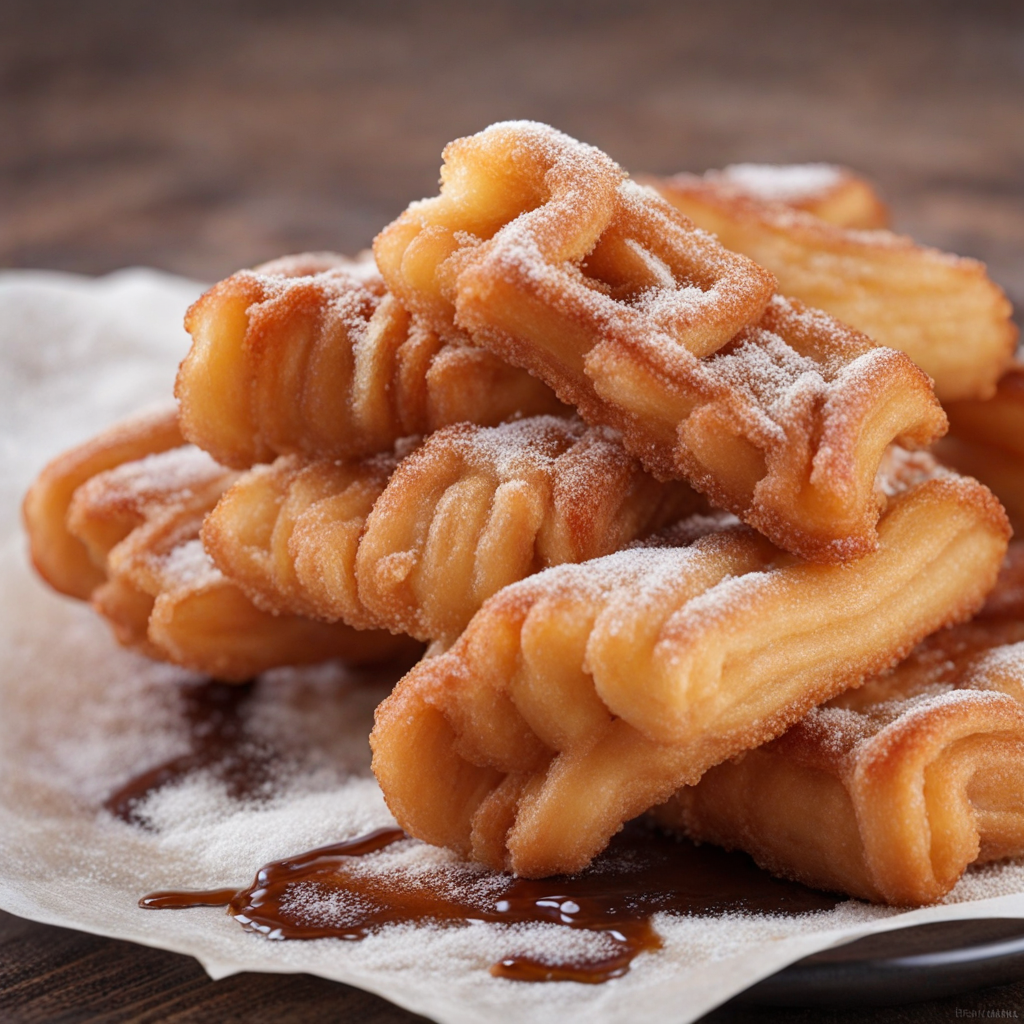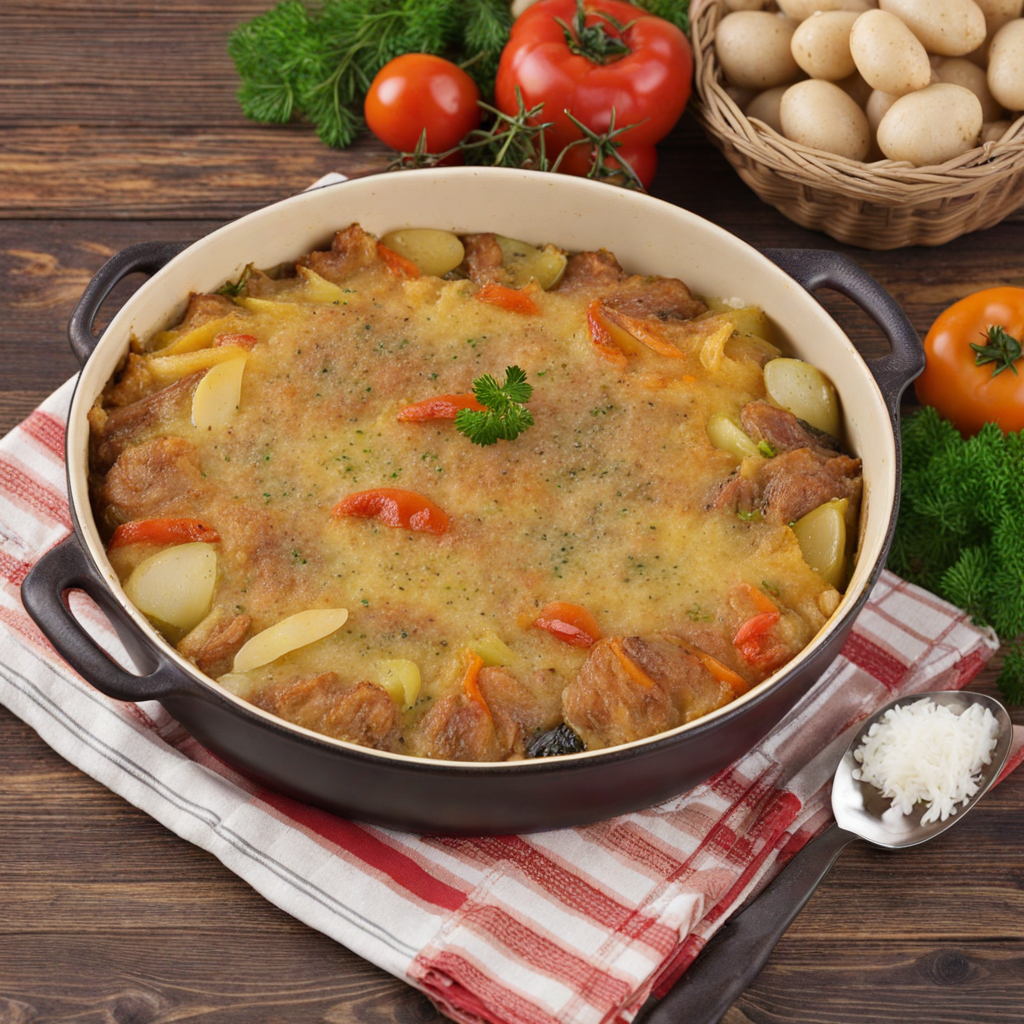Pastrmajlija
Pastrmajlija is a traditional Macedonian dish that embodies the rich flavors and culinary heritage of North Macedonia. At its core, this dish features a thin, oval-shaped bread that is often compared to a pizza base, but with a distinct character of its own. The bread is typically made from a simple dough of flour, water, salt, and yeast, which is rolled out to a thin layer and baked to perfection. Its slightly crispy exterior contrasts beautifully with the tender and flavorful toppings that make Pastrmajlija a true delight for the palate. What truly sets Pastrmajlija apart is its toppings, which usually consist of a combination of spiced meat, often pork or lamb, and sometimes includes an assortment of herbs and spices that add depth to the flavor profile. The meat is typically marinated with ingredients such as garlic, paprika, and black pepper, creating a savory and aromatic experience with every bite. Some variations may also incorporate vegetables or cheese, but the focus remains on the rich meat, which is sliced thinly and generously spread across the dough before baking. Pastrmajlija is often served warm, straight from the oven, and is best enjoyed alongside a refreshing salad or a glass of local wine. Its unique taste and texture make it a perfect dish for sharing with friends and family, inviting everyone to indulge in its hearty, satisfying flavors. Whether you're sampling it at a local tavern or trying your hand at making it at home, Pastrmajlija promises a delicious encounter with North Macedonian cuisine that will leave your taste buds craving more.
How It Became This Dish
The Delicious Journey of Пастрмајлија: A Culinary Icon of North Macedonia Pastrmajlija, a beloved dish from North Macedonia, is more than just a food item; it represents a rich tapestry of cultural history, regional pride, and culinary traditions that have evolved over centuries. This delectable flatbread topped with spiced meat is a staple in Macedonian cuisine, and it is deeply rooted in the historical and social fabric of the Balkans. Origins The origins of pastrmajlija can be traced back to the Ottoman Empire, which ruled over the Balkans for several centuries, from the 14th century until the early 20th century. The name itself derives from the Turkish word "pastirma," which refers to a method of preserving meat through a process of salting and air-drying. This technique was essential in an era before refrigeration, as it allowed for the preservation of protein sources for extended periods. Pastrmajlija is thought to have originated in the region of Vardar, particularly around the city of Štip, which was a significant trade and cultural center during the Ottoman era. The dish combines influences from Turkish, Greek, and Slavic culinary practices, reflecting the multicultural nature of the region. The base of the dish—a thick, leavened flatbread—can be likened to Turkish pide or Greek pita, showcasing the blend of culinary traditions that characterize the Balkans. Cultural Significance In North Macedonia, pastrmajlija is more than just a meal; it is a cultural symbol. Traditionally, the dish was prepared for special occasions, family gatherings, and festivals, particularly during the winter months when hearty, meat-based dishes were favored. Its preparation often involves a communal effort, with families coming together to make the dough and prepare the toppings, strengthening bonds and reinforcing social ties. The dish is often associated with celebrations and hospitality. It is common to see pastrmajlija served at weddings, holidays, and other significant events. The act of sharing food is a vital aspect of Macedonian culture, and pastrmajlija embodies this spirit of togetherness and generosity. Ingredients and Preparation Pastrmajlija is typically made with a base of dough made from flour, water, yeast, and salt, which is allowed to rise before being rolled out into a flat shape. The topping is the star of the show, consisting of cured and spiced meat, usually pork or lamb, that has been salted and sometimes smoked. The meat is cut into small pieces and marinated with an array of spices, including paprika, black pepper, and sometimes garlic, which adds depth and complexity to the dish. Once the dough is prepared and rolled out, the meat mixture is spread generously over the surface. The dish is then baked in a hot oven until the bread is golden brown and the meat is cooked to perfection. The result is a dish that is rich in flavor and texture, with a crispy crust and tender, juicy meat beneath. Evolution Over Time As North Macedonia has evolved, so too has pastrmajlija. While the traditional recipe remains beloved and widely consumed, modern interpretations have emerged, showcasing the adaptability of this culinary classic. In recent years, there has been a renewed interest in traditional foods, with chefs and home cooks alike experimenting with new ingredients and techniques while still honoring the dish's roots. Some contemporary variations of pastrmajlija might include different types of meats, such as chicken or beef, or even vegetarian alternatives that incorporate seasonal vegetables and cheeses. Additionally, the dish is often served with various condiments, such as yogurt or ajvar (a roasted red pepper spread), which complement the bold flavors of the meat and bread. The rise of culinary tourism has also contributed to the popularity of pastrmajlija outside of North Macedonia. As travelers seek authentic food experiences, local restaurants and eateries have begun to promote this traditional dish as a must-try item, introducing it to new audiences. Food festivals celebrating Macedonian cuisine often highlight pastrmajlija, showcasing its cultural significance and inviting visitors to partake in its rich heritage. Pastrmajlija in Contemporary Society In modern North Macedonia, pastrmajlija continues to be a beloved comfort food, often enjoyed in casual settings. Street vendors and bakeries serve up freshly made pastrmajlija, making it an accessible option for locals and tourists alike. The dish has also found a place in the hearts of younger generations, who appreciate its rich flavors and the stories it carries. As North Macedonia navigates its identity in the broader context of the Balkans and Europe, traditional foods like pastrmajlija play a crucial role in fostering a sense of national pride and cultural heritage. Efforts to preserve traditional recipes and culinary techniques are evident in various initiatives aimed at promoting Macedonian cuisine, ensuring that future generations can continue to enjoy and celebrate dishes like pastrmajlija. Conclusion Pastrmajlija is more than just a dish; it is a representation of North Macedonia's history, culture, and culinary evolution. From its origins in the Ottoman Empire to its status as a beloved comfort food today, pastrmajlija embodies the spirit of community, hospitality, and tradition that is central to Macedonian life. As this dish continues to be enjoyed by locals and embraced by food enthusiasts around the world, it serves as a delicious reminder of the rich culinary heritage that North Macedonia has to offer. Through every bite of pastrmajlija, one can taste the history, culture, and love that has gone into creating this iconic dish, making it a true treasure of the Balkans.
You may like
Discover local flavors from North Macedonia







